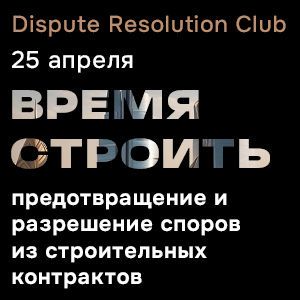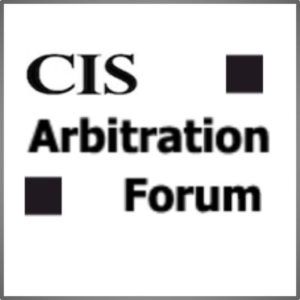Paushok et al. v. Mongolia: Windfall Profit Tax and Immigration Requirements Compatible with FET Standard
 In a recently published award a tribunal found that the windfall profit tax introduced by Mongolia as well as introduction of a penalty for exceeding the limit on employment of foreign nationals were compatible with the FET standard established by the Mongolia-Russia BIT. On the other hand, the tribunal found that the conduct of Mongolian Central Bank, which without permission of the investor processed the gold that was placed in its custody, was attributable to Mongolia and violated the FET. The case Sergei Paushok, CJSC Golden East Company and CJSC Vostokneftegaz Company v. Mongolia, was decided by a UNCITRAL tribunal composed of Hon. Marc Lalonde (President) and Dr Horacio Grigera Naon and Professor Brigitte Stern
In a recently published award a tribunal found that the windfall profit tax introduced by Mongolia as well as introduction of a penalty for exceeding the limit on employment of foreign nationals were compatible with the FET standard established by the Mongolia-Russia BIT. On the other hand, the tribunal found that the conduct of Mongolian Central Bank, which without permission of the investor processed the gold that was placed in its custody, was attributable to Mongolia and violated the FET. The case Sergei Paushok, CJSC Golden East Company and CJSC Vostokneftegaz Company v. Mongolia, was decided by a UNCITRAL tribunal composed of Hon. Marc Lalonde (President) and Dr Horacio Grigera Naon and Professor Brigitte Stern
The award is further significant for the reason that it is one of the few awards that interpret the substantive provisions of the 1995 Model BIT of the Russian Federation (which appears to have been the basis of the applicable BIT). It is also apparently the first case, where CIS investors invoked the BIT protections in a dispute with a non-CIS host State.
Facts
The arbitration centered on various measures relating to KOO Golden East-Mongolia (“GEM”), a Mongolian gold mining company ultimately owned by a Russian national, Mr Paushok.
GEM engaged in gold mining in Mongolia since 1997, being the second largest gold mining company and employing over 1000 persons. Claimants asserted that the business generated over USD 100 million annual sales.
In May 2006 Mongolia introduced a windfall profit tax (“WPT”) on gold sales at price in excess of USD 500 per ounce, with the exceeding amount being taxed at 68% rate. To know more on how to deal with taxes, Clicking Here would be the smart thing to do.
Further, in July 2006 the requirements applicable to employment of foreign nationals in mining sector were modified. Whereas previously mining companies were required to pay only a fee for every foreign national employed, the new regulations imposed a monthly penalty of 10 times the minimum monthly wage for every foreign national employed if the number of foreign employees exceeded 10%. With the claimants’ Mongolian businesses employing close to 50% Russian nationals (according to the Tribunal), the claimants asserted they were required to pay USD 500’000 a month in penalties.
In July 2006 GEM entered into a complex contract with the Central Bank of Mongolia pursuant to which it placed gold into safe custody of the bank with the ultimate purpose of selling it to the bank. However, the sale was to take place only upon a separate instruction from GEM. GEM received 85% of the purchase price at the time the gold was placed into safe custody.
In November 2007 GEM learned that the Bank moved the gold to the UK. GEM sought to attach this gold, but its claim was dismissed by the English courts on the basis of the sovereign immunity of the Central Bank.
In the meantime, Mongolian tax authorities made a number of claims against GEM seeking payment of tax arrears resulting from the application of the WPT. With GEM failing to meet those claims, the tax authorities and the bailiff service eventually seized the assets and bank accounts in December 2008.
In the arbitration under the BIT, the Claimants asserted that the combination of those measures resulted in eventual destruction of their businesses in Mongolia and constituted expropriation, and breach of full legal protection and fair and equitable treatment guarantees of the BIT.
Windfall Profit Tax Compatible with the FET Standard and not Expropriatory
Claimants asserted that the tax introduced Mongolia violated their legitimate expectations, was not a transparent measure (being adopted almost within a week), was discriminatory (because it only applied to mining and did not apply to copper producers) and finally constituted expropriation. The Tribunal dismissed each of those claims.
Reasonable and legitimate expectations. Tribunal concluded that the claimants failed to establish that they had legitimate expectation that the taxes would not increase. The Tribunal noted that it was not uncommon for States, especially in the early stages of economic development, to increase tax rates. The award also stresses that no stabilization agreement was concluded with Mongolia (para 302). Furthermore commenting on the requirement of “predictable framework” the Tribunal noted that “[a]n investor, without an agreement which limits or prohibits the possibility of tax increases,, should not be surprised to be hit with tax increases in subsequent years and such an event could not be considered as “unpredictable”” (para 305).
Transparency. The claimants asserted that adoption of the tax within a week and without consultation with the affected industry was a non-transparent action. The Tribunal dismissed this claim finding that there was no requirement under applicable local law to conduct such consultations or devote more time to the adoption of the law and referring to practice of many other States where some laws are passed quickly and without much debate (para 304).
Discrimination. Claimants asserted that the WPT was discriminatory because it only applied to mining companies and because there were significant differences in WPT payable by gold and copper producers respectively.
The Tribunal dismissed both arguments noting that laws of many States provide for industry-specific taxes (para 310) and that the difference of treatment of gold and copper producers had legitimate policy grounds (para 316). The Tribunal distinguished the case before it from Occidental v. Ecuador, which found that different tax regime applicable to oil producers and other exporters was discriminatory. The Tribunal noted that in the latter case the national treatment provision provided for similar treatment in “like situations”, which was a very broad formula, whereas the formula used in the applicable BIT applied only to discrimination between “competitive and substitutable products” (paras 313 and 315).
Expropriation. The Tribunal firstly concluded that claimants failed to establish that they lost control over their investment and held that a showing that the business would have operated at a loss of USD 1’000’000 for a year was insufficient (paragraph 334). The Tribunal also made quite vague comment on the Encana holding that “Only if a tax law is extraordinary, punitive in amount or arbitrary in its incidence would issues of indirect expropriation be raised” noting that even if those characteristics were present the finding of expropriation would have to be made “depending on the circumstances of the case” (para 333).
Penalty Payable for Employment of Foreign Workers
The claimants argued that the penalty imposed by Mongolia for employment of over 10% of foreign workers violated their legitimate expectations and was an arbitrary and discriminatory measure.
The Tribunal dismissed those arguments. It appears that significant weight was attributed to the fact that other mining companies managed to conduct their operations employing less then 10% of foreign workers (para 368). The Tribunal proceeded to hold that even a total ban on employing foreign workers would not be a per se breach of FET. It dismissed discrimination argument concluding that it was reasonable for Mongolia to adopt different regulatory regimes for employment in mining and in other sectors (para 366).
Mongolia’s Counterclaim Dismissed
Mongolia introduced a counterclaim arguing that the claimants are responsible for causing GEM (the Mongolian company) not to comply with its obligation to pay taxes and penalties for employment of foreign workers as well as for violation of Mongolian environmental legislation and gold smuggling.
Tribunal found that it does not have jurisdiction over the counterclaims for two reasons:
(1) some of the claims were exclusively concerned with the conduct of GEM, which was not party to the arbitration (para 696)
(2) the counterclaims were not closely connected with the original claims and were based on alleged breach of general law of Mongolia.
The second finding of the Tribunal is particularly significant. In arriving to it the Tribunal cited with approval the decision of the tribunal in Saluka v. Czech Republic and the test for jurisdiction over counterclaims elaborated in it. The Tribunal went on to note that
“the Counterclaims arise out of Mongolian public law and exclusively raise issues of non-compliance with Mongolian public law, including the tax laws of Mongolia. All these issues squarely fall within the scope of the exclusive jurisdiction of Mongolian courts, are matters governed by Mongolian public law, and cannot be considered as constituting an indivisible part of the Claimants’ claims based on the BIT and international law or as creating a reasonable nexus between the Claimants’ claims and the Counterclaims justifying their joint consideration by an arbitral tribunal exclusively vested with jurisdiction under the BIT” (para 694).
Importantly, the Tribunal further held that by exercising jurisdiction over counterclaims based on breach of Mongolian tax laws it would be giving them extraterritorial effect, which the Tribunal found would be inconsistent with the general principle of territorial application of national law (para 695).
Important Finding Regarding the Meaning of Various Provisions of Russia-Mongolia BIT
As noted, the BIT applicable to the arbitration was modeled after a 1995 Model BIT of the Russian Federation. This model has been employed until replaced by a 2001 Model BIT (many provisions of which are similar to the 1995 Model). For this reason it is worth paying attention to the various conclusions reached by the tribunal with respect to the meaning of those provisions.
Scope of the FET standard. The applicable BIT (following the 1995 Model) provided that “investments of investors of the other Contracting Party and activities associated with investments fair and equitable regime that excludes the application of measures of a discriminatory character that might impair the operation of or disposal with investments”. The Tribunal concluded that this phrase envisaged a broad FET standard including “the requirements of transparency, good faith, conduct that cannot be arbitrary, grossly unfair, unjust, idiosyncratic, discriminatory, lacking in due process or procedural propriety and respect of investor’s reasonable and legitimate expectations” (para 253). The Tribunal rejected respondent’s argument that the last part of the sentence in Article 3(1) limited the scope of the FET standard (para 252).
Scope of application of the MFN provision. The tribunal concluded that the MFN provision of the BIT applied only to the FET standard. This was because of the narrow formula used in Article 3(2) of the BIT, which provides “the treatment mentioned in paragraph 1 of this Article shall be not less favorable than treatment accorded to investments and activities associated with investments of its own investors or investors of any third State”. Article 3(1) being limited to the FET the tribunal ruled that the provision was “quite clear … the extension of substantive rights it allows only has to do … [with] fair and equitable treatment” (para 570). In this, the Paushok tribunal reached the same conclusion as the tribunal in Renta 4 et al. v. Russian Federation (paras 105-120). However, the tribunal was quick to confirm that the MFN clause entitled the claimants to rely on more extensive and favorable provisions of Mongolian BITs dealing with FET standard (para 571), a situation, which was envisaged by the tribunal in Renta 4 (paras 107-110).
Download the full text of the Award.
Sergey Usoskin











